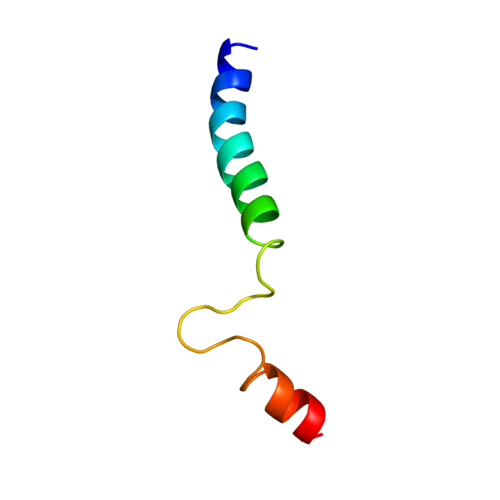| Protein Name | UniProt Label | Function | Location |
|---|
| TMEM52B | Q4KMG9 | Function has not been studied | Integral component of membrane, extracellular region |
| TMEM14B | Q9NUH8 | Involved in the cortical expansion and folding in the developing neocortex; may drive neural progenitor proliferation through nuclear translocation | Integral component of membrane |
| RTP2 (Receptor-transporting protein 2) | Q5QGT7 | Promotes functional cell surface expression of olfactory receptor | Plasma membrane |
| SAR1A | Q9NR31 | Involved in transport from the ER to the Golgi apparatus; SAR1S-GTP-dependent assembly of SEC16A on the ER membrane form an organized scaffold defining ER exit sites | ER, Golgi apparatus |
| STX7 (Syntaxin-7) | Q15400 | May be involved in protein trafficking from the plasma membrane to early endosome; mediates trafficking from early to late endosomes and lysosomes | Endosome, plasma membrane |
| CPLX4 (Complexin-4) | Q7Z7G2 | Regulates SNARE protein complex-mediated synaptic vesicle fusion | Plasma membrane |
| APP (Amyloid-beta precursor protein P4) | P05067 | Functions as cell surface receptor in neurons; involved in cell mobility and transcription regulation | Extracellular region/secreted, plasma membrane, endosome, nucleus, cytoplasmic vesicle |
| EGFR | P00533 | Ligand binding trigger receptor homo/heterodimerization and autophosphorylation on key cytoplasmic residues; this phosphorylated receptor recruits adaptor proteins which activate downstream signaling cascades | Nuclear membrane, ER membrane |
| LNPEP (Leucyl-cystinyl aminopeptidase) | Q9UIQ6 | Release of an N-terminal amino acid, cleaves before cysteine and leucine; helps maintain homeostasis during pregnancy | Plasma membrane, extracellular region |
| ECM29 | Q5VYK3 | Adaptor/scaffolding protein which binds to specific proteins; may couple the proteasome to ER, endosome, and centrosome | Nucleus, centrosome, ER, endosome, cytoplasmic vesicle |










